




Back to the Scilly Isles Page

- The Royal Connection
- The Scilly Isles Eat
- Owlbut's Birdwatch
- Scilly Isles VIPs
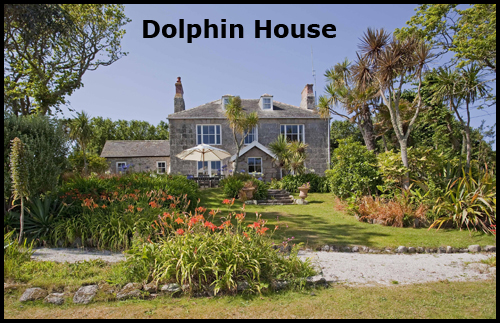 The Duchy of Cornwall is a private
estate essentially owned by the Duke of Cornwall. The Duke of Cornwall is, by tradition, the eldest son of the monarch. Therefore, Prince William, also Duke of
Cambridge, is the present Duke of Cornwall.
The Duchy of Cornwall is a private
estate essentially owned by the Duke of Cornwall. The Duke of Cornwall is, by tradition, the eldest son of the monarch. Therefore, Prince William, also Duke of
Cambridge, is the present Duke of Cornwall.
The Duchy of Cornwall owns most of the land which makes up the Scilly Isles and nearly one third of the residential buildings on the islands. Dolphin
House on the isle of Tresco is, or was, owned by King Charles III. It may actually have been owned by the Duchy, meaning Prince William owns it. If the latter is
correct then the Duchy of Cornwall owns the isle of Tresco. Prince William would be the owner of the island on which he owns a house.
I further understand that, when the Royal family or their friends are not using the house it is available for private rent. If my plans to travel
England from September 2023 come to fruition then I shall have a word about a possible four night stay.
Tourism is the most important industry on the islands with almost 100,000 visitors in the summer during normal times. Flower farming is also an
important part of the local economy, helped by the mild climate. The scented Narcissi are a particular favourite. With so many uninhabited, perhaps hardly
ever visited by humans, islands, wildlife and nature thrive. The Isles of Scilly Wildlife Trust, which manages around 60 per cent of the area of the Isles,
including the uninhabited islands, plays an important role in protecting wildlife and their habitats. The Trust pays a rent to the Duchy of one daffodil per year!
Now about that four night stay. I've just had a quick look around my garden and I can do a tulip and an unnamed purple thing. Is that suitable your
Royal Highness?
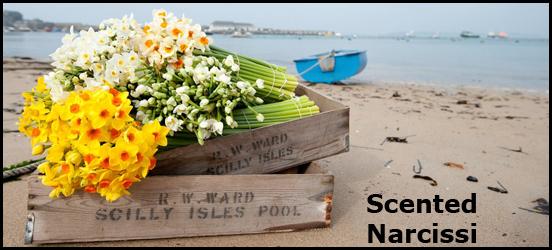
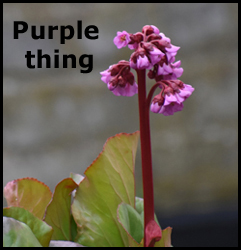
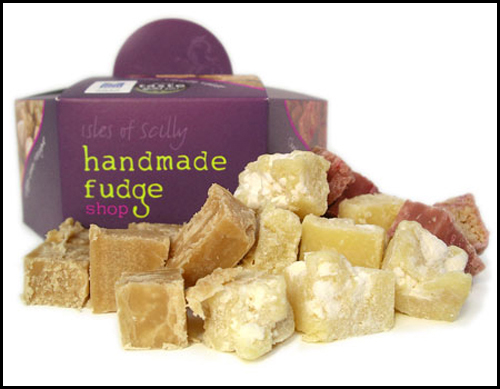 Obviously, being a group of islands,
sea food is not only popular on the Scilly isles it is also extremely fresh. However, on my only visit (3 hours) I am certain I bought some fudge.
I know from my many months spent there that you can get fudge nearly everywhere in Cornwall so this would seem likely but I have no proof. I did then do a quick
google and discovered there are now at least two places on the Scilly Isles who make and sell fudge so that is what I have decided the Scilly Isles eat.
Obviously, being a group of islands,
sea food is not only popular on the Scilly isles it is also extremely fresh. However, on my only visit (3 hours) I am certain I bought some fudge.
I know from my many months spent there that you can get fudge nearly everywhere in Cornwall so this would seem likely but I have no proof. I did then do a quick
google and discovered there are now at least two places on the Scilly Isles who make and sell fudge so that is what I have decided the Scilly Isles eat.
It seems that fudge was invented in America as recently as 1886. However when you use a recipe that includes clotted cream, for which the west country
of England is famous, then you can see why it has become so popular in this area. There are no doubt many recipes for making fudge and some will have a secret
ingredient that gives that fudge a unique taste but the general principle seems to be to boil unrefined caster sugar, golden syrup and clotted cream, adding any
colouring or flavouring, like vanilla, that you want and when it has reached a certain temperature, remove it from the heat and beat the mixture, tradition
says by hand, until it becomes thick. This can take ten minutes it says. Then put it into some kind of tin and leave it for 30 minutes. Mark into squares,
or any shape you want I guess, and leave until set. Some people then cut it into squares, or the shape they have marked, and store it in an airtight container.
This seems to me like a waste of an airtight container so I would save on that by eating all the fudge at once.
![]() Back to the top
Back to the top
The storm petrel is a little bit bigger than a sparrow. People think it may be called a "storm" petrel because
sailors associated seeing the birds with bad weather. The storm petrel is largely found on islands on the west coast of England. It only comes to shore to breed
and then at night. They are present at the breeding sites from May to September. You may see some offshore in October when they fly south to waters off South Africa.
They often feed in flocks and will follow ships, especially fishing trawlers. This is probably as they eat fish, plankton and crustaceans. When they
feed they hold their wings up in a "V" pattern.
Storm petrels appear all black but with a white patch on their backs. They have brown legs and a black, medium length, hooked beak. There are 25,700
breeding pairs in the UK.
Storm petrels are between 14 and 18 cms in length, have a wingspan of between 36 and 39 cms and weigh between 23 and 30 grams.
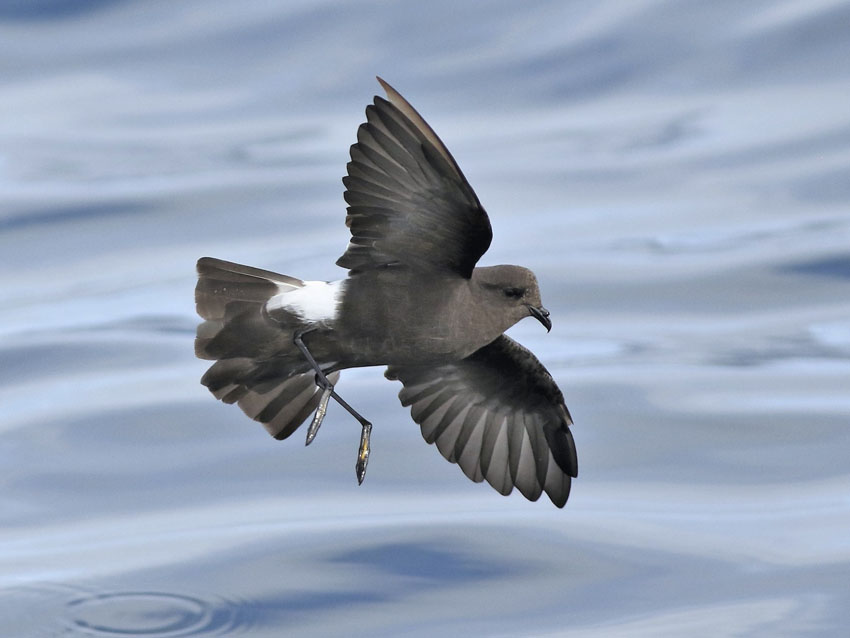
Seven random people who were born in the Scilly Isles in the last 100 years:-
Needless to say with a total population of just over 2,000 people, the smallest on our journey, it has not been possible to find, despite endless research,
seven VIPs for this section. I did find two who might fit:‐
Sam Llewellyn (Author) and the late Stella Turk (Zoologist, Naturalist, and Conservationist).
Normally mothers are taken to Cornwall to give birth or to the main island of St. Mary's so I guess Thea Windrige Hicks who was born on St Agnes
(population 73) in 2013 is pretty special as she was the first birth there since 1937. Meanwhile, Marcus Daniel McLachlan missed out on being born on St Martin's
(population 142) as his mother was airlifted to Cornwall for his birth. He wasn't born in Cornwall either as he arrived in mid-air, in a helicopter,
somewhere over Cornwall. Bit VIPish too.
![]() Back to the top
Back to the top

